
On Sunday evening I went up to take a look at Cairn Gorm, the first time since the repair of the funicular started. I got a photo of the construction (see here) of the tube slides before the rain started. The steel support structure for the slides, referred to in the planning application, appear to have disappeared

The steel supports were also referred to in this email from Jim Cornfoot of Cairngorm Mountain Scotland Ltd to the Cairngorms National Park Authority just six weeks ago. In place of steel supports the tube slides have been placed on a pile of what appears to be excavated glacial till. There is no indication on the planning portal that the CNPA Planners have agreed to this or how Cairngorm Mountain Scotland Ltd intend to “finish” the sides. These appear far too steep to “restore” with vegetation. It’s hard to see how wood “to match the handrails” on the bridge, will be much use here but perhaps I have missed something?
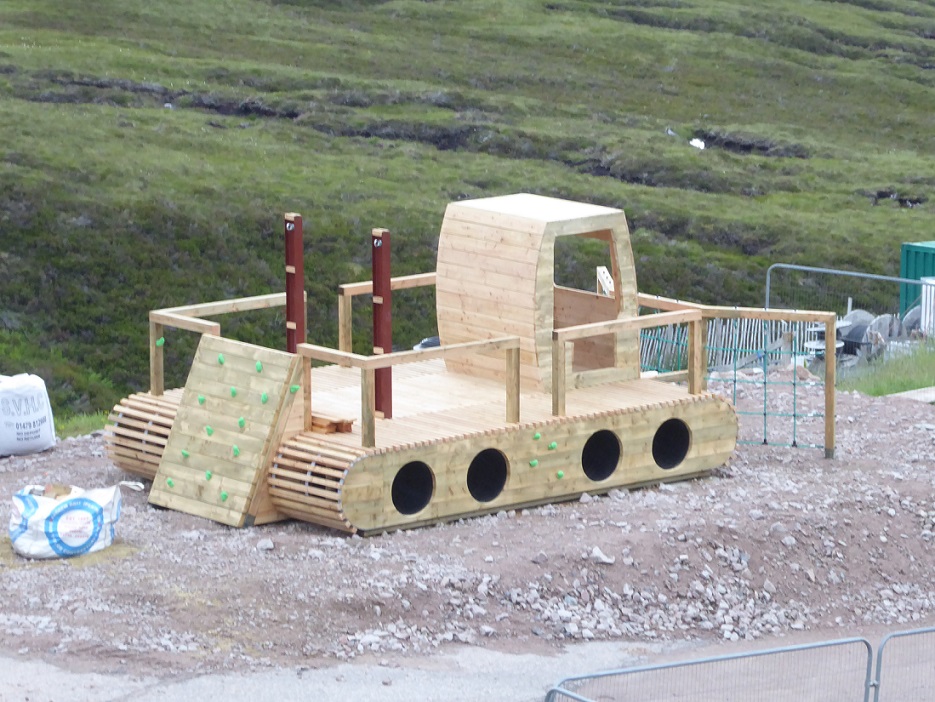
Across from the bottom of the tube slides, the “further works” in the Coire Cas car park referred to in my post or 2nd July, turn out to be a wooden memorial to downhill skiing at Cairn Gorm. This doesn’t appear to have had planning permission either. But it provides an initial indication of the other “attractions” CMSL is planning for the activity area it proposed in its new masterplan for the hill.
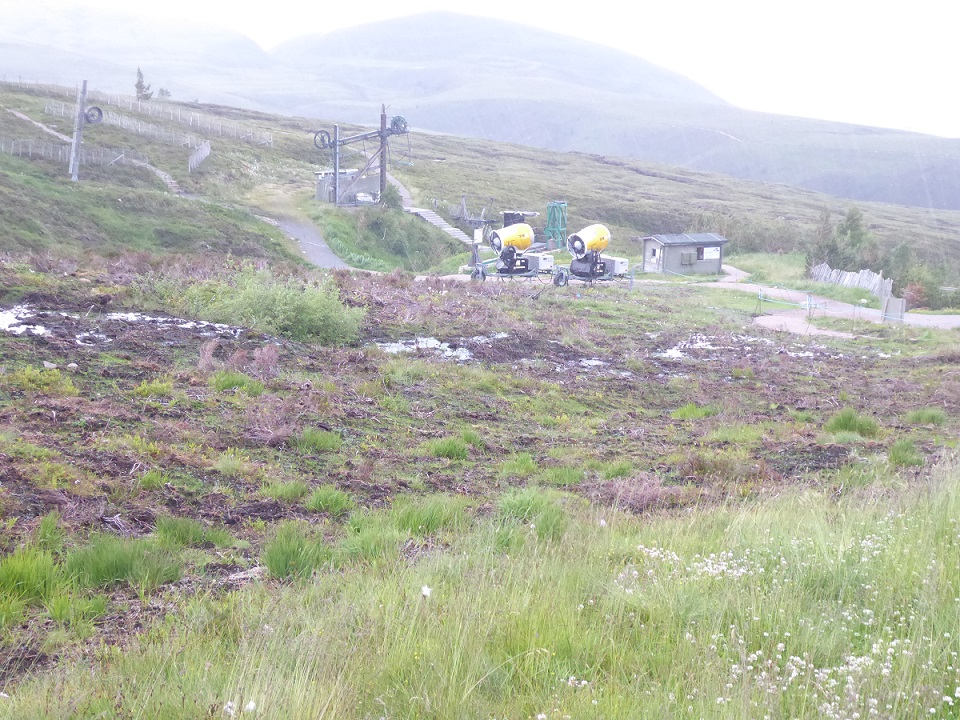
As we left the car park, the new beginner’s area Highlands and Island Enterprise had created above the snow machines – the ground was smoothed to make the artificial snow go further – was already pouring with water when it started to rain. It appears that Parkswatch’s prediction (see here) that the development would increase water run off and risk of flooding is correct. Instead of a bog, which absorbs water, HIE and CMSL appear to have destroyed much of the water holding quality of the peat and in doing so have instigated the creation of new watercourses.
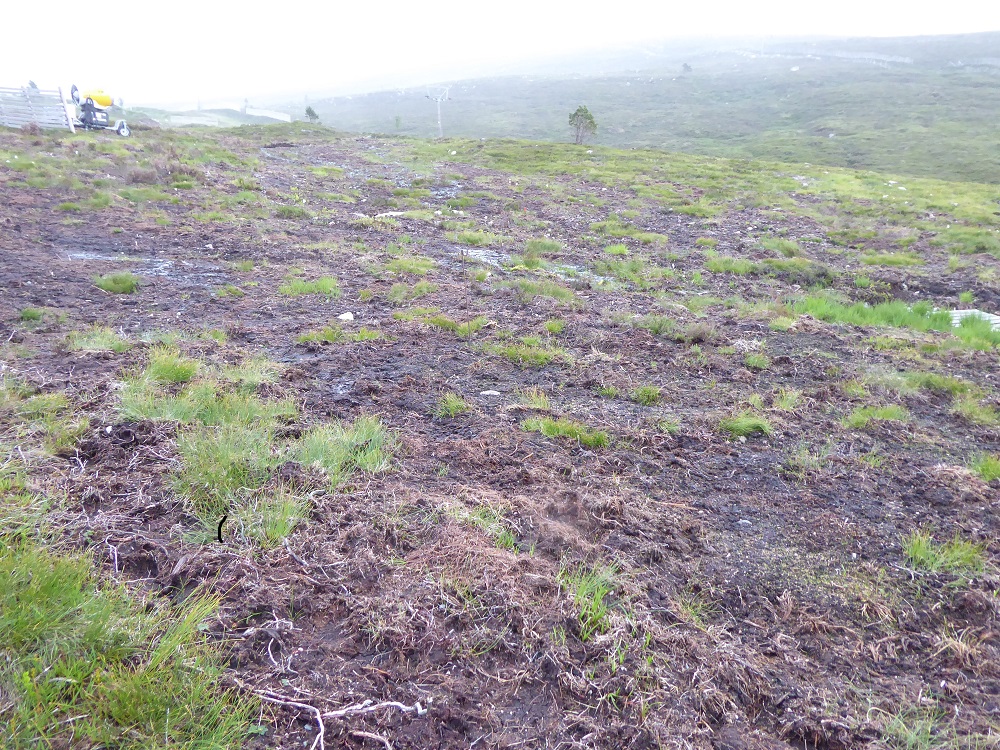
The lesson, which also applies to the funicular repairs, is that you mess with the hydrology of slopes in the mountains at your peril. On our return, by which time the rain was very heavy and it was too wet for photos, one of my companions noted that a culvert that had been installed under the slope was bone dry. Another indication, perhaps, that the works have resulted in more water now flowing over the surface. Not much good either as a base for artificially created snow or skiing!
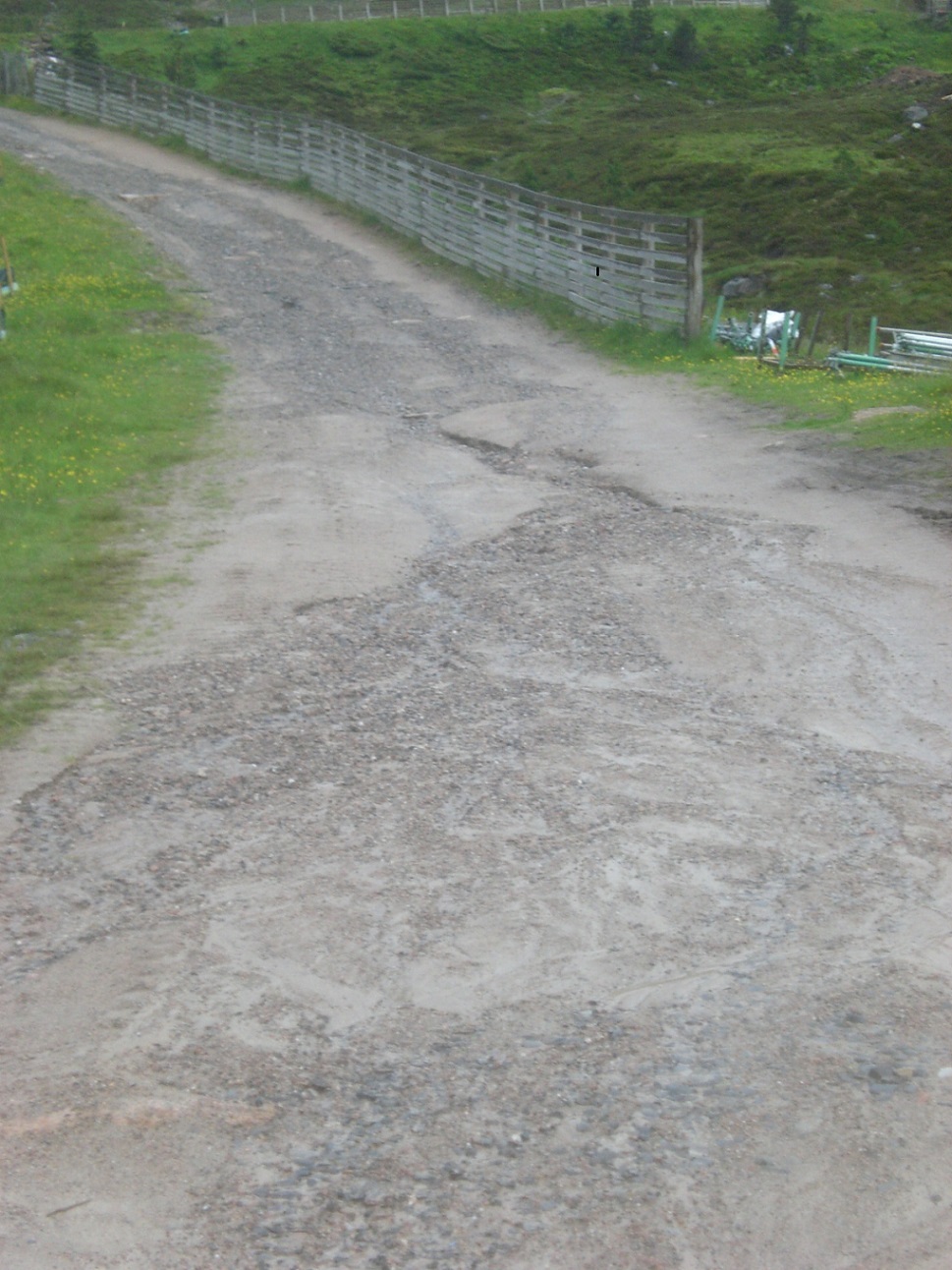
Keeping to the water theme, walking back down from the shieling, the hill road was awash with water and eroding fast. There had been reference in the funicular repair planning application to the need to improve this road for construction traffic and you can see that below the fence and alongside it that new surface material appears to have been added. Whatever its origins, the surface is now eroding fast. Unfortunately the CNPA agreed that none of the access tracks required planning consent so they now cannot do anything about this except ask politely and that, as everyone should know by now, gets you nowhere with HIE.
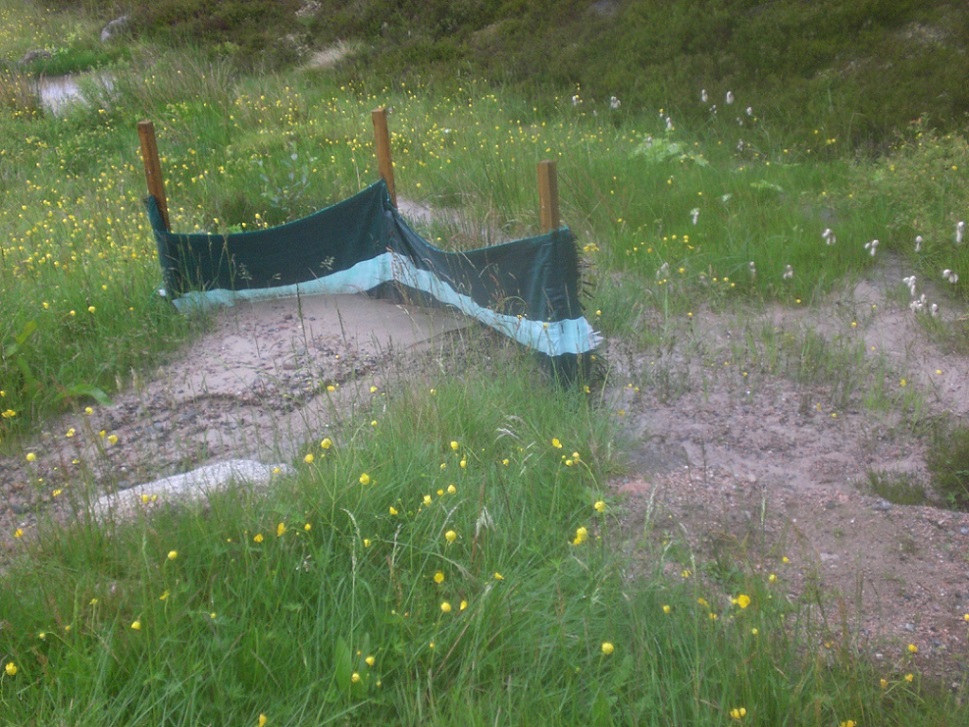
While a silt trap had been installed below where the stream flowed off the road, it was obviously ineffective..
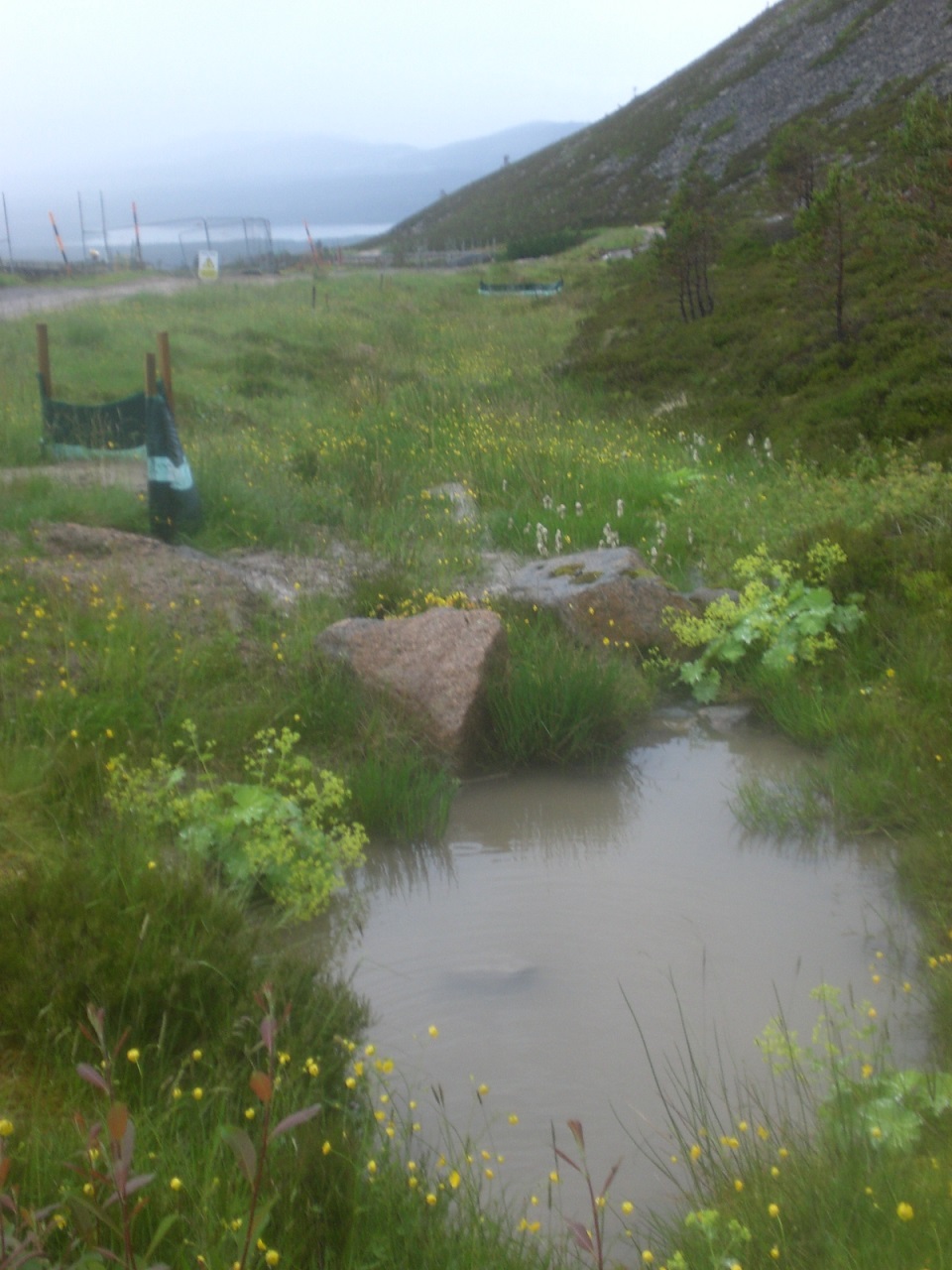
The stream was full of silt, being washed down into the Allt Mhor, which drains Coire Cas. This is part of the River Spey Special Area of Conservation, supposedly the strongest level of protection that can be applied to a river system. In other planning applications – such as the Gynack overflow AT Kingussie – the CNPA has been keen to reduce the risks of silt being washed into the Spey SAC, but at Cairn Gorm the repair of the funicular appears to have been put first, whatever the environmental cost. Whether the Scottish Environmental Protection Agency, who are also supposedly trying to stop silt being washed unnecessarily into rivers, are prepared to act remains to be seen.
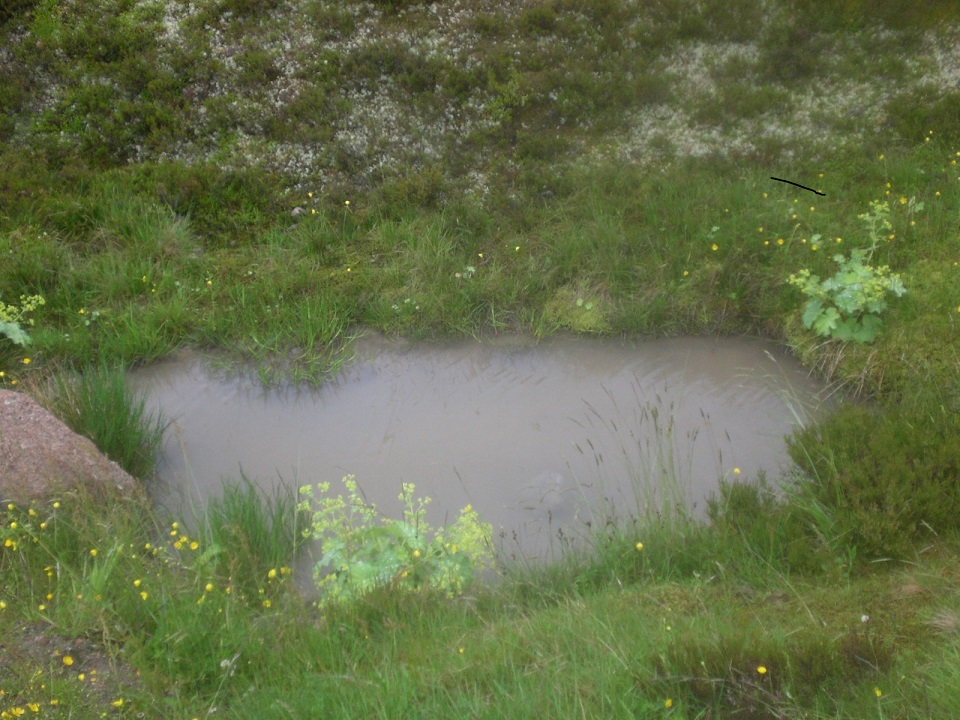
While none of the very poor environmental management featured in these photos should have been allowed to happen on Cairn Gorm, the damage unfortunately pales into insignificance compared with the environmental destruction being caused by the repair of the funicular. I will cover that in a seperate post.
Even a this late stage it would be less damaging and cheaper to halt funicular repair, dismantle, erect a quad chair and do something about vegetative regeneration.
I’m afraid that when idiots try to cover their backs after a bad decision it just cascades on to even more bad decisions and eventually becomes completely unaffordable leaving scars that take decades to heal.
Looking at the photos and your comments fills me with despair. How can this continue to happen? The idea of a railway in this part of Scotland is absolutely stupid. The Lake District authorities would never have agreed to such a loony scheme, I’m sure! Look what happened to Snowdon!
The whole project looks as if it being built on the hoof by a group of inexperienced people. It’s a bit like inviting a group of shoddy builders to transform your garden into some sort of funfair complex!
Irreparable damage is being made to the landscape and I’m sure this must be affecting the flora and fauna of the region.
The land should be left alone. It should forever be a natural and beautiful wilderness!
I fear that the way things are being done on Cairn Gorm will become a repeat of the incompetent management of the plant/soil system during the original development. The outwash shown down the road from the Shieling demonstrates a basic lack of drainage to guide water into side ditches before it is a big enough flow to erode material. This smacks not so much of incompetence as careless indifference. Adam Watson assessed the frequency of flash floods on the Allt Mhor draining Corrie Cas, the Feshie and the Nethy and showed that, over the 30 years 1950-1980, the frequency on these last two rivers had remained constant, it had doubled every 10 years on the Allt. Silt from the Cas of course probably does not reach the Spey.It settles in Loch Morlich. In early years of courses at Glenmore Lodge, students annually assessed the extent of the outwash at the entry to the loch and its changes but these results were discarded.
I recall looking into erosion events in mountains prior to the 1981 enquiry into ski developments in the Northern Corries and one thing was clear. Erosion on badly managed mountain areas did not simply occur gradually. What happened usually was that cumulative damage gradually raised the vulnerability of the area. Mountains are prone to dramatic weather events (of the kind like excessively heavy downpours that we have seen on Cairn Gorm and which climate change is increasing in frequency and intensity) and then there is a major erosion event as vulnerable areas come apart. Cairn Gorm may well be heading for such an event. Indeed a heavy downpour now of the kind other areas of the UK are seeing might have significant impact.
It occurs to me that an analysis of sediment cores from Loch Morlich, perhaps made in comparison with similar lochs that didn’t have a skiing resort in their catchment, would make an interesting PhD topic.
The pictures also show the issue of colonisation of disturbed ground by plants naturally absent in the area, such as docks, buttercups and, worryingly, the highly invasive garden escape Alchemilla mollis (garden lady’s mantle). And possible cow parsley (although hard to see in the picture). Results in the continual loss of naturalness of the Cairngorms…
Grantown on Spey had 0ver 80mm of rain in the two days of 27 and 28 July. It would be interesting to see the effects on the funicular construction site if anywhere near that amount of rain fell on Cairngorm. There are laws to prevent pollution and silting of watercourses by human activity, but I assume SEPA will be turning a blind eye as usual.
Councillors who allowed this mess to go ahead should be charged with willful destruction of a site of special scientific interests.
Dismantle the whole thing and restore the hill to it’s natural state and make the councillors pay for the cock up out of their pension pot.